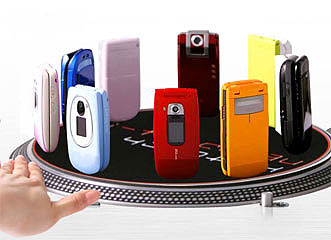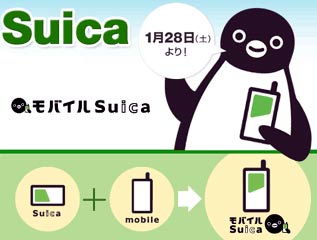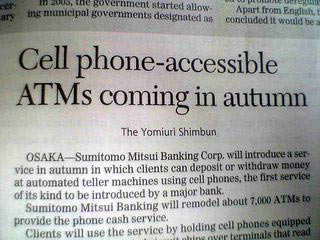Over the past 12 to 18 months the mobile division of KDDI, known here as ‘au,’ has been leading the way in Japan’s cellular marketplace. During a recent interview at the 3G World Forum, one European visitor asked the seemingly obvious question, “What is the main reason for their success?” 
The reasonable answer is that it’s actually a combination of several factors, but one thing stands out. Compared to the NTT DoCoMo and Vodafone business models, au has a very tight focus on the domestic market. Their attention to detail in customer service and product offerings is not challenged by how the product mix and content offerings might fit into the company’s global strategy — and it shows. This has allowed au to take the lead in areas like GPS, flat-rate data and faster networks, all provided to the consumer on affordable price plans. The carrier now offers a full suite of popular and useful services ranging from Navitime, EZ auctions, EZ book, EZ channel, EZ games, and EZ FM to (recently introduced) mobile IM (‘Hello Messenger’), mobile blogging (‘DuoBlog’) and Lismo.
Looking again at au’s recent blitz of cutting-edge models at Designing Studio last week, just in time for Japan’s peak spring sales season, we were truly impressed; it will be a tough choice for shoppers. The phones and services strongly illustrate one of the most fundamental and important learnings about Japan’s mobile success that we’ve been trumpeting for years.


 This week marked a major milestone for WWJ! In one form or another, I’ve been writing this email newsletter for five years — and what a five year term it’s been!
This week marked a major milestone for WWJ! In one form or another, I’ve been writing this email newsletter for five years — and what a five year term it’s been! For Vodafone Japan, the end came not with a bang, but with a whimper. When we arrived at last Monday’s press event – the final one, it turned out, before news of the Japan sell-out hit the Web – the smell of pending doom hung in the air. Ironically, the media briefing bore an optimistic title: the “Future Direction of Product & Service Development.” It was also surprising to see that President Bill Morrow and Chairman Tsuda-san would attend for the 3G roadmap briefing to be given by former J-Phone super-star Ohta-san; WWJ has never seen three Vodafone Big Guys in one room together for a media briefing (perhaps there is safety in numbers)? But when the talk from all three turned out vague and totally avoided any mention of new MVNO’s signing up to resell Vodafone 3G capacity — widely considered to be one of Big Red’s few viable options in Japan — we suspected something was up.
For Vodafone Japan, the end came not with a bang, but with a whimper. When we arrived at last Monday’s press event – the final one, it turned out, before news of the Japan sell-out hit the Web – the smell of pending doom hung in the air. Ironically, the media briefing bore an optimistic title: the “Future Direction of Product & Service Development.” It was also surprising to see that President Bill Morrow and Chairman Tsuda-san would attend for the 3G roadmap briefing to be given by former J-Phone super-star Ohta-san; WWJ has never seen three Vodafone Big Guys in one room together for a media briefing (perhaps there is safety in numbers)? But when the talk from all three turned out vague and totally avoided any mention of new MVNO’s signing up to resell Vodafone 3G capacity — widely considered to be one of Big Red’s few viable options in Japan — we suspected something was up. Tomi Ahonen is a smart guy who’s done a lot of observing and thinking about the 3G future. He reports that planet Earth has 2 bn mobile phones, with more phones in use than cars, credit cards or televisions, and that advertisers, businesses and governments are all trying to understand how the mobile future will download. For a glimpse into the future, Tomi was in Tokyo last month for the
Tomi Ahonen is a smart guy who’s done a lot of observing and thinking about the 3G future. He reports that planet Earth has 2 bn mobile phones, with more phones in use than cars, credit cards or televisions, and that advertisers, businesses and governments are all trying to understand how the mobile future will download. For a glimpse into the future, Tomi was in Tokyo last month for the 
 On a sunny Saturday morning here in Tokyo, Japan Rail launched their long-awaited
On a sunny Saturday morning here in Tokyo, Japan Rail launched their long-awaited  WWJ’s Lawrence Cosh-Ishii, our director of digital media and resident video and mobile guru, was in Tokyo this afternoon wrapping up a long day and heading for a few frosty Kirin lagers when he spotted this headline at a news kiosk. Normally, when we latch onto breaking Japan mobile news, we go into hypernewsroom mode, working the phones, Googling the keywords and pinging folks in the know to get as full and in-depth a report as we can — and get the gen onto the site pronto for our loyal WWJ community.
WWJ’s Lawrence Cosh-Ishii, our director of digital media and resident video and mobile guru, was in Tokyo this afternoon wrapping up a long day and heading for a few frosty Kirin lagers when he spotted this headline at a news kiosk. Normally, when we latch onto breaking Japan mobile news, we go into hypernewsroom mode, working the phones, Googling the keywords and pinging folks in the know to get as full and in-depth a report as we can — and get the gen onto the site pronto for our loyal WWJ community.